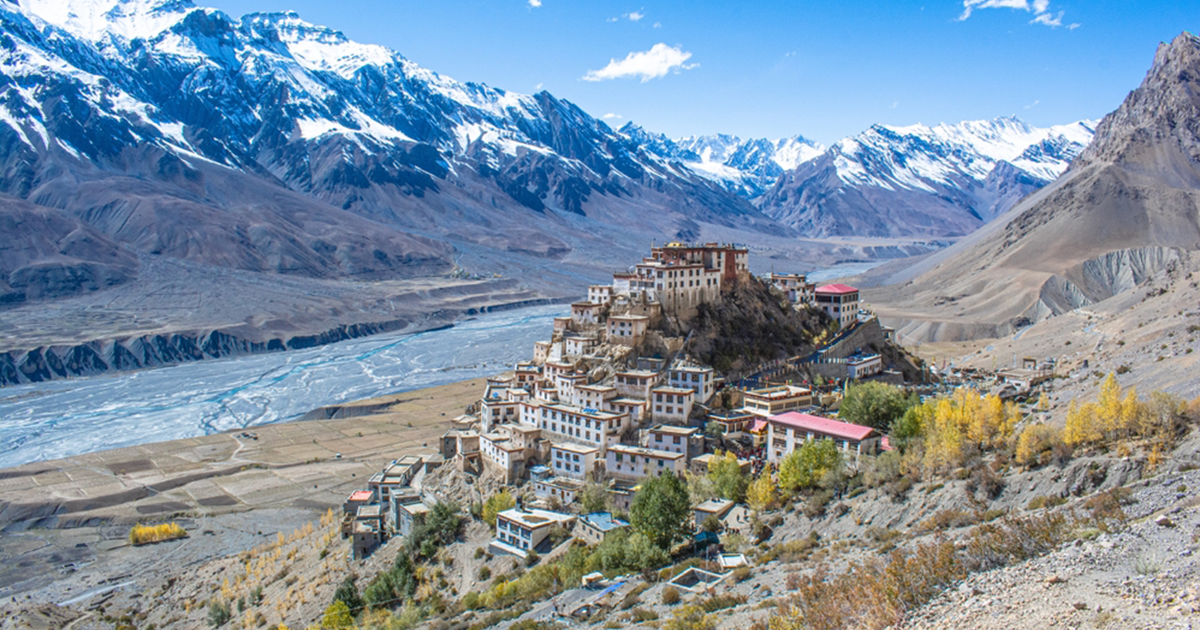Spiti Valley Travel Guide 2025: The Hidden Gem of the Himalayas
Nestled high in the cold desert mountains of Himachal Pradesh, Spiti Valley remains one of India’s most enchanting and offbeat travel destinations. With its raw landscapes, ancient monasteries, and crystal-clear skies, Spiti offers travelers an experience that’s both spiritual and adventurous. In 2025, the valley is witnessing a rise in sustainable tourism, improved accessibility, and eco-conscious stays — making it the perfect time to explore this Himalayan wonderland.
Why Visit Spiti Valley in 2025?
Spiti, which means “The Middle Land” (as it lies between India and Tibet), has long been a favorite among seasoned travelers, bikers, and photographers. Here’s why 2025 is an ideal year to visit:
- Improved road infrastructure: The Atal Tunnel and better-maintained highways have reduced travel time from Manali and Shimla.
- Eco-friendly homestays: Many villages now offer homestays that promote cultural immersion and sustainable tourism.
- Less crowded than Leh-Ladakh: Spiti offers similar terrain and culture without the tourist overload.
- Digital detox: With minimal network connectivity, it’s the perfect place to disconnect and rejuvenate.
How to Reach Spiti Valley
There are two main routes to Spiti:
1. Shimla – Kinnaur Route (Open all year, weather permitting)
- Route: Shimla → Kalpa → Nako → Tabo → Kaza
- Best for: Comfortable gradual altitude gain, ideal for first-timers.
2. Manali – Rohtang – Kunzum Pass Route (Open from June to October)
- Route: Manali → Rohtang Pass → Kunzum La → Kaza
- Best for: Adventure seekers and bikers.
Nearest Airport: Bhuntar (Kullu) or Shimla
Nearest Railhead: Shimla or Joginder Nagar
Top Places to Visit in Spiti Valley
1. Kaza
The district headquarters and the largest town in Spiti, Kaza is the main hub for travelers. You’ll find cafes, guesthouses, and ATMs here. It’s a great base for day trips to nearby villages and monasteries.
2. Key Monastery
A 1,000-year-old Tibetan Buddhist monastery perched dramatically on a hilltop, Key Monastery is a spiritual and visual highlight. You can even stay here overnight for a truly immersive experience.
3. Hikkim – World’s Highest Post Office
Located at 14,567 feet, Hikkim is home to the world’s highest functioning post office. Send a postcard to loved ones from the top of the world.
4. Langza – The Fossil Village
This village is known for ancient marine fossils and the imposing statue of Buddha overlooking the valley. Langza is a must-visit for photography and fossil hunting.
5. Chicham Bridge
Asia’s highest bridge, Chicham offers stunning views and connects remote villages like Kibber and Chicham. It’s also a great spot for drone photography.
6. Pin Valley National Park
Famous for snow leopards and rare flora, this protected reserve offers opportunities for wildlife spotting and trekking.
Where to Stay
Spiti is now home to a range of accommodations — from basic guesthouses to boutique eco-resorts:
- Zostel Spiti (Kaza) – Great for backpackers and solo travelers.
- Tethys Himalayan Den (Kibber) – Offers cozy rooms and local food.
- Spiti Ecosphere Homestays – A responsible travel initiative promoting village homestays with a focus on sustainability.
In 2025, more accommodations are incorporating solar energy, waste management systems, and local employment to reduce tourism’s ecological footprint.
What to Eat
Spitian cuisine is influenced by Tibetan and Himachali flavors. Must-try dishes include:
- Thukpa – Noodle soup with vegetables or meat
- Momos – Steamed dumplings served with spicy chutney
- Tingmo – Soft steamed bread, often served with dal or curry
- Yak cheese and butter tea – Local specialties perfect for high-altitude climates
Best Time to Visit
- Summer (May to September): Ideal for most travelers. Roads are open, weather is pleasant, and villages are accessible.
- Winter (October to March): Only for the brave-hearted. Most routes close due to heavy snow, and temperatures can dip below -20°C. However, it’s the best time for snow leopard expeditions.
Travel Tips for Spiti in 2025
- Acclimatize properly: Spiti is over 12,000 feet. Stay hydrated, avoid alcohol initially, and rest adequately.
- Carry cash: ATMs are scarce and unreliable beyond Kaza.
- Pack warm: Even in summer, nights are cold. Layered clothing is key.
- Network connectivity: BSNL works in Kaza and some villages. Don’t expect fast internet or mobile data.
- Be respectful: Spiti’s culture is deeply spiritual. Avoid loud music and always ask before photographing people or religious sites.
Responsible Tourism Matters
With increasing tourist footfall in 2025, preserving Spiti’s fragile ecosystem is more important than ever. Travelers are encouraged to:
- Carry reusable water bottles and avoid plastic.
- Stay in locally owned accommodations.
- Support community-run cafes and co-operatives.
- Follow Leave No Trace principles on treks and hikes.
Final Thoughts
Spiti Valley is not just a destination — it’s an experience. In 2025, the valley offers a rare blend of raw nature, spiritual depth, and a chance to disconnect from modern chaos. Whether you’re meditating in a monastery, sipping butter tea with a local family, or watching the Milky Way light up the sky, Spiti promises a journey that lingers long after you’ve returned.


